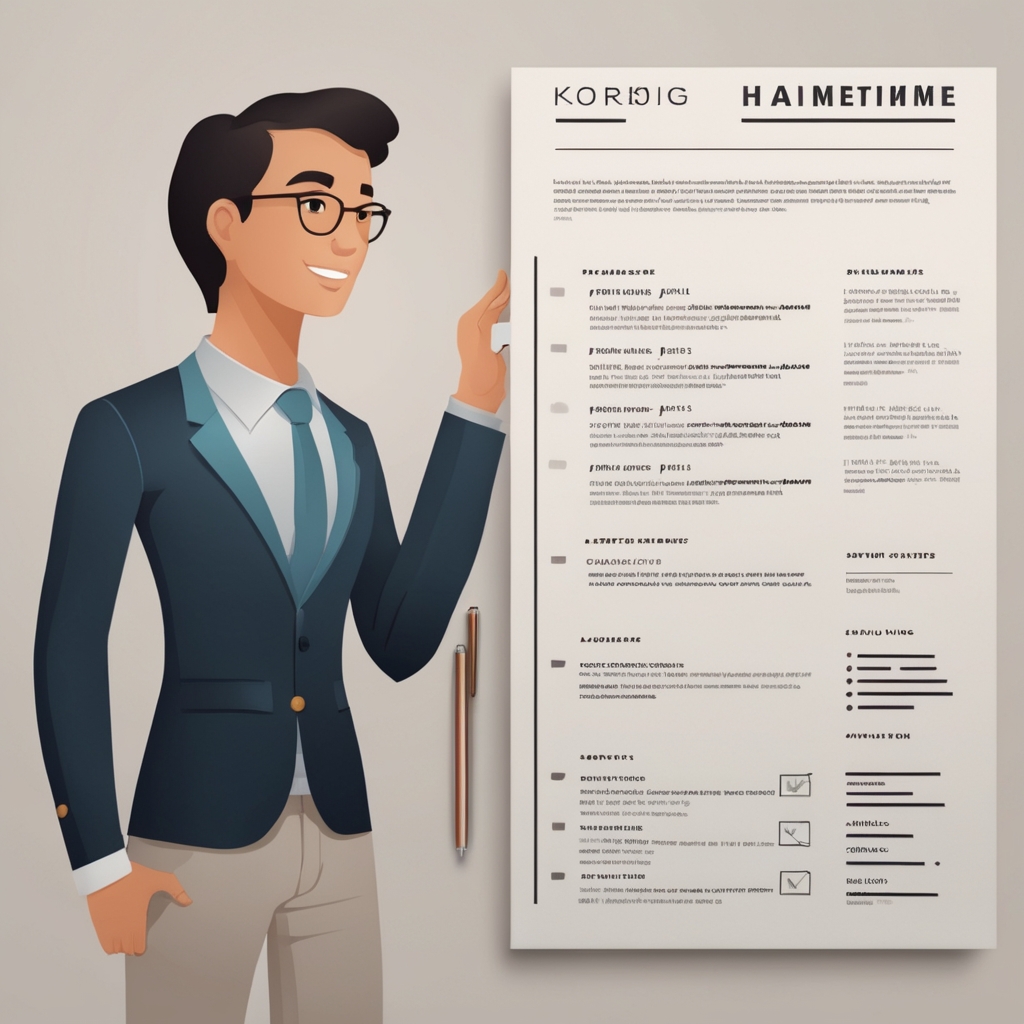When it comes to writing a resume, small details can make a difference, and that is why many people struggle with whether or not to list dual enrollment on their resume. Dual enrollment, where students in high school take college courses for credit, is certainly an achievement.
Dual enrollment can help persons in their early careers, such as high school seniors, recent graduates, and first and second-year college students. It says to the prospective employer or an admission committee that you went beyond the standard curriculum, and can manage advanced materials especially if the courses are in line with where you want to focus on then, dual enrollment will give you an advantage. In this article, we will look deeper into when you should flaunt that dual enrollment experience and when you should leave it behind.
What Is Dual Enrollment?
The dual enrollment program is a program that gives high school students the chance to enroll in college-level courses and earn credits which can facilitate transition into college. This prepares you for further education, expanding your possibilities of learning options and career opportunities in the future.
It is important to understand that dual enrollment isn’t merely about conserving time and money – it is also about obtaining an ideal competitive edge through the early introduction of college training.
Benefits Of Adding Dual Enrollment To Your Resume
Including dual enrollment on your resume can boost it. Here’s why you should.
1. Shows Commitment to Education
Listing dual enrollment shows you care about your education. It shows you’re ready for college work while still in high school. This makes you stand out. Employers and colleges like seeing a strong work ethic and and a passion for learning. It also highlights your ability to manage responsibilities effectively and adapt to challenging environments. These qualities demonstrate maturity and commitment to personal and academic growth.
2. Highlights Skills
Dual enrollment builds essential skills. These include time management and critical thinking. It shows you can handle challenging courses. For example, if you took a public speaking class, you can highlight your improved communication skills. Additionally, it helps you gain confidence in navigating college-level expectations. These experiences can give you a head start in academic and professional settings.
3. Shows Initiative
Dual enrollment needs self-discipline and initiative. It shows you’re proactive and ready for more responsibilities. This quality is attractive to employers and colleges. It suggests you’re prepared for college or work challenges. Moreover, it reflects your ability to prioritize and smash your goals. These traits set you apart as a motivated and goal-oriented individual.
4. Boosts Your Academic Profile
For college-bound students, dual enrollment adds depth to their education. It shows you’ve studied relevant subjects. For example, if you’re aiming for a healthcare career, courses in biology or health sciences will impress admissions committees. It demonstrates a clear sense of direction and commitment to your chosen field. This can give you a competitive edge when applying for scholarships or specialized programs.
5, Offers Networking Opportunities
Dual enrollment lets you meet college professors and students. This can be beneficial later. It might lead to recommendations or collaborations. Building these connections early can open doors to internships or research opportunities. It also helps you develop networking skills essential for future success. These relationships could become valuable assets as you advance in your academic or career journey.
Our top readers enjoyed reading: Is It Illegal to Lie on a Resume? What Every Job Seeker Needs to Know
When To Include Dual Enrollment
At what point should you really consider listing dual enrollment on your resume? Here are some conditions that may make you decide to do so.
1. Limited Work Experience
If you’re a new graduate entering the workforce for the first time, your resume may be lacking due to your status. At this point, you are unlikely to have worked multiple jobs or completed various internships. In this case, it is best to seek aid from your academic achievements to account for the vacant section and make a more significant impact. Dual enrollment experience, for example, demonstrates a drive to challenge oneself and the ability to thrive in college while remaining focused on high school activities. This hustle and risk-taking mentality might reassure an employer about your work ethic and discipline.
2. Relevant Coursework
Are the classes you took relevant to the career field or position you’re seeking? If the course is related to your employment aspirations, then it is worth mentioning. For example, if you are applying for a software engineering internship position and are still in high school but took a computer science course through dual enrollment, that is very much appropriate for the position. This shows that you have not only taken the initiative to prepare yourself but you have also accumulated some knowledge within the field. This gives you an edge, especially when targeting entry-level positions or internships.
3. Impressive Grades
Let’s face it – good marks are among the things that will leave a good impression. If you have scored high in your dual enrollment classes, there is no reason to hide them as earning A’s in college-level courses despite being a high school student demonstrates academic capability, concentration, and an inherent ability to cope with sophisticated materials that can place you ahead of other applicants.
4. When Space Allows
Your resume should be informative but should not be longer than necessary. Preferably one page for new early-career professionals and two for those who have been in the industry for some time. If you are looking for a reason to make your resume a whole page, dual enrollment is a good addition that will add substance to your resume without any negative impact.
But if spaces are limited, then it would be wise to eliminate excess academic experiences and concentrate on the more recent and creative ones unless your dual enrollment is closely related to the job you are applying for.
When To Leave It Out
1. Outdated Information:
If you are a few years into your profession or gathered more relevant experiences such as internships, full-time jobs, or certificates, it would be appropriate to retire your achievements of dual enrollment. Though they were a great achievement in the past, they may not have the same significance as more recent and relevant professional experiences.
2. Irrelevant Coursework
Not every dual enrollment class will apply to all the jobs. For example, if you took a course on ‘Introduction to Underwater Basket Weaving’, it was just a fun class and unless you are applying for a job that involves basket weaving, it won’t be relevant. So, don’t include anything that does not directly apply to the job that you are applying for. Include the details that will make the employer think of you as the perfect candidate for the job.
How To List Dual Enrollment
If you’ve decided that your dual enrollment experience is worth including, here’s how to present it effectively on your resume:
Create a Dedicated Section
Include a section on your resume titled “Education” or “Relevant Coursework” where you can list your dual enrollment courses. This ensures they are easily noticeable and appropriately categorized.
Mention Both Institutions
Clearly state the names of your high school and the college or university where you completed the courses. Include the city and state of each institution to provide a complete picture. For example, write “Springfield High School/Springfield Community College, Springfield, IL.” If the dual enrollment program has a specific name (e.g., Early College Program), be sure to include that as well to add clarity and context. This helps reviewers immediately recognize the nature of your educational experience.
List Course Titles
Include the full names of the courses you took, especially those that apply to the position you are applying for. This shows that you are knowledgeable in that particular area. Whenever possible, use more descriptive course titles that integrate a wide topic, such as ‘Introduction to Psychology’ rather than ‘Psychology’. You can also include the course level (e.g., 100-level or introductory) to highlight that it was college-level work. If applicable, mention any specialized focus within the course, such as lab work or project-based learning, to further showcase your experience.
Emphasize Skills Gained
Emphasize transferable skills gained through dual enrollment, such as time management, critical thinking, collaboration, and advanced subject areas. Such skills enhance your academic background while also demonstrating your presence in a professional setting. Also, describe how these abilities helped you handle complex problems or execute several activities simultaneously in the required manner.
Format Consistently
Consistently format each section of your resume to look professional. Use bullet points or a neat structure to improve its presentation. Standardizing font styles, sizes, and consistent line spacing across all resume sections makes it appear nice and organized. It is advisable to use simple headers and sub-headings with enough space to avoid congestion. Such attention to detail increases the resume’s clarity and efficacy.
Make Dual Enrollment Work For Your Resume
The answer to the question “Should I list dual enrollment on my resume?” is crucial. If it adds value to your application and makes it more enticing to the employer, then go ahead and utilize it. However, don’t hesitate to omit it if it adds no value. Guarantee that your resume contains only what is essential in selling your brand to the target audience and making them want to hire you.
Remember that your resume is about presenting your best and most relevant skills and experience. Dual enrollment can be a part of that narrative, but only if it adds value to the picture you’re trying to paint for your future employer.
Ready to create a resume that outlines your dual enrollment perfectly so that you can stand out in a pool of candidates? Then use LightResume to build an ATS Friendly Resume. Visit www.lightforth.org to begin.
Updated: 24/10/2025
FAQs About dual Enrollment on Resumes
How do I add dual enrollment to my resume?
List it under Education as “Dual Enrollment” with the school name, courses taken, and dates.
What should not be included in a resume?
Do not include age, marital status, photos (unless required), full home address, salary history, or unrelated personal details.
How do I list a dual degree on a CV?
List both degrees under the same university entry, like:
B.A. in Economics & B.S. in Statistics, University Name (Year)
Do employers care if you double major?
Yes, when it’s relevant to the job. It signals stronger academic rigor and broader skill sets, but it won’t replace real experience.
What are red flags on resumes?
Unexplained long gaps, frequent job hopping, messy formatting, no measurable achievements, spelling errors, and vague job descriptions.





